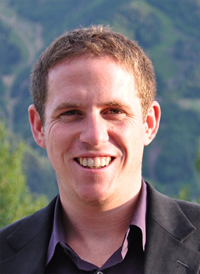It used to be that solar costs were dominated by one thing: the cost of the actual panel. But now, things are quite different. Solar panels comprise less than 40% of the cost of a rooftop solar system on average across the U.S.
Reducing the Cost of Solar Energy
Jesse Morris | The Rocky Mountain Institute
Why is Rocky Mountain Institute focusing on cost reductions for the solar energy industry?
 Reinventing Fire, RMI’s roadmap for a secure, resilient, low-carbon and robust U.S. economy by 2050, calls for a great deal of solar energy to be deployed across the U.S. over the next forty years. For RMI, solar fits into a broader portfolio of investments in our current energy infrastructure that include widespread efficiency measures, microgrids, and the development of other energy sources like wind. But for solar to be deployed at scale throughout the U.S. and compete with existing costs of electricity from fossil-fuel based sources, the cost of solar has to come down.
Reinventing Fire, RMI’s roadmap for a secure, resilient, low-carbon and robust U.S. economy by 2050, calls for a great deal of solar energy to be deployed across the U.S. over the next forty years. For RMI, solar fits into a broader portfolio of investments in our current energy infrastructure that include widespread efficiency measures, microgrids, and the development of other energy sources like wind. But for solar to be deployed at scale throughout the U.S. and compete with existing costs of electricity from fossil-fuel based sources, the cost of solar has to come down.
What are the key leverage points for cost reductions within solar energy?
It used to be that solar costs were dominated by one thing: the cost of the actual panel. But now, things are quite different. Solar panels comprise less than 40% of the cost of a rooftop solar system on average across the U.S. And although module costs can come down further, for RMI, the real high-impact leverage points are currently found in the remaining 60% of the cost, the “Balance of System” side of the solar equation.
More specifically, within these Balance of System (BoS) costs there are two basic categories: “soft” costs (examples include the cost to pay laborers to install a system, permitting costs, utility interconnection fees, financing costs, and money spent on actually acquiring customers) and “hard” costs, like the mounting hardware that fixes panels to rooftops and the inverter. At this time, the Simple BoS project is focused specifically on helping the solar industry reduce two of these: on the soft side, all costs associated with installation labor, and on the hard side, any cost associated with the racking and mounting hardware.
How will the Simple BoS (Simple Solar Balance of Systems) project help reduce the cost of solar PV in the U.S.?
There’s some survey data that has helped the industry understand roughly how much time and money is spent on the primary focal points of this project: installation labor and racking hardware. There’s also survey data illustrating that these costs are much, much lower in Germany—an international solar market leader. In fact, total balance of system costs are 75% lower for comparable rooftop solar systems in Germany than they are in the U.S. For this project, we’re going to explore this cost divide between the two countries, tease out actionable insights, and help spread best practices, designs, and processes amongst the U.S. solar industry to help lower Balance of System costs.
How will the project be carried out and who is or will be involved?
Our primary partner in this project is the Georgia Tech Research Institute (GTRI). To better understand this cost divide and gather more detailed data and insights on the installation process, we’ll be working with solar electric installers in the U.S. and Germany. RMI and GTRI researchers will be using using proven LEAN-process techniques from multiple manufacturing industries and construction fields to conduct time and motion studies on actual solar installations. This data collection process will allow us to gain deep insight on leading performers both here and in Germany and help bring best practices to the forefront of the industry. The project is funded by both the Department of Energy's Sunshot Initiative and RMI donors.
How can a solar company get involved in the project?
Interested companies should visit http://www.rmi.org/simple or email simple@rmi.org for more information. Solar companies that participate in our time and motion studies and survey data collection efforts will receive free reports benchmarking them against industry and highlighting potential areas for improvement.
What are the specific impacts that you hope this project will have on the solar industry in the U.S.?
In the near term, we’d like to see the best practices identified through this project be widely adopted by installers across the U.S. Ideally, helping them become more profitable and reduce the cost of solar energy for their customers. We also hope to glean insights from our data collection and analysis meant specifically for racking manufacturers and rule-making bodies. For example, we hypothesize that one reason low cost rooftop solar is prevalent in Germany is because they use racking systems that don’t penetrate rooftops. If we can validate this hypothesis with on-the-ground data collection and installer feedback, we’ll then attempt to work with manufacturers and regulatory bodies to explore how these designs might proliferate across the U.S. market going forward.
How will the results of the project be presented to those who need the information?
Our Simple BoS website will have continually updated information as we start analyzing data and releasing results. We’ll also be publishing reports, white papers, and will likely hold webinars and webchats as a first step towards getting these insights out in the open.
Please tell us a bit about the Rocky Mountain Institute and what is your mission?
RMI’s vision is a world thriving, verdant, and secure, for all, for ever. Our mission is to drive the efficient and restorative use of resources. RMI's approach is non-adversarial and trans-ideological, emphasizing integrative design, advanced technologies, and mindful markets. Our strategic focus, executed through specific initiatives designed to take our work rapidly to scale, is to map and drive the transition from coal and oil to efficiency and renewables. More information on our organization and mission can be found at www.rmi.org
Jesse Morris:
Jesse Morris is a consultant in the electricity and transportation practices of the Rocky Mountain Institute. Within electricity, Jesse is primarily involved in RMI’s solar program where he works with his team to help expand PV solar deployment across the U.S. Jesse works closely with industry to identify and capture balance-of-system cost reduction opportunities in addition to exploring new financing opportunities within the solar industry. Jesse also participated in RMI’s Reinventing Fire research initiative where he analyzed the potential for whole-system design to improve the U.S. transportation system by investigating exactly where, when, why, and how we use our vehicles. He also researches freight system efficiency and heavy truck design and operations.
Jesse graduated from Colorado College with a degree in International Environmental Policy. At Colorado College, Jesse was deeply involved with academic research groups with a variety of focuses, ranging from commercial oil sands development in Alberta, Canada to climate change in the Arctic Circle and its implications on international environmental laws and norms. Before joining RMI, Jesse worked in the private sector and pursued his interest in alternative energy and efficiency with PV Powered (now Advanced Energy), a grid-tied photovoltaic inverter manufacturer.
The content & opinions in this article are the author’s and do not necessarily represent the views of AltEnergyMag
Comments (0)
This post does not have any comments. Be the first to leave a comment below.
Featured Product

